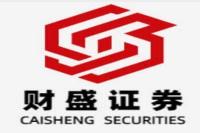Tesla's "Whale" Swims Away: Leo KoGuan Dumps Stock, Bets on US Treasuries – A Deep Dive
Meta Description: Leo KoGuan, Tesla's third-largest individual shareholder, is selling his Tesla stock and investing in short-term US Treasuries. Learn why this "whale" is changing course and what it means for Tesla's future. #Tesla #LeoKoGuan #StockMarket #USTreasuries #InvestmentStrategy
The recent news that Leo KoGuan, famously dubbed Tesla’s “most bullish retail investor” or even a "whale" due to his significant holdings, is offloading his Tesla stock has sent ripples throughout the financial world. It's not just the sheer scale of his divestment that's grabbing headlines; it's the why behind it—a compelling narrative interwoven with geopolitical anxieties, personal disagreements with Elon Musk, and a shrewd assessment of the current economic climate. This isn't just another market fluctuation; it's a fascinating case study in high-stakes investment strategy, risk management, and the unpredictable nature of the stock market. This detailed analysis will unravel the complexities surrounding KoGuan's decision, examining his past investments, his relationship with Tesla and its CEO, and the broader implications for both Tesla's stock price and the overall market sentiment. Buckle up, because this is one wild ride! We'll delve into the intricacies of KoGuan's portfolio shift, exploring the rationale behind his move from electric vehicle innovator to US Treasury bond aficionado. We'll also dissect the market's reaction, analyze KoGuan's past investment successes and failures, and look into what his actions could foreshadow for other investors. Get ready to unearth insights that go far beyond the surface-level news reports, providing a comprehensive and nuanced perspective on this pivotal moment in the Tesla saga. Finally, we’ll address the burning questions many investors have, providing clarity and context to this unexpected development.
Tesla Stock Sell-Off: KoGuan's Strategic Shift
KoGuan, a prominent figure known for his sizable Tesla stake, recently announced his decision to reduce his position in the electric vehicle giant and allocate those funds to short-term US Treasury bonds. This bold move, announced via a cryptic yet revealing tweet, has ignited considerable speculation and debate within the investment community. Why would someone who previously championed Tesla, even touting ambitions to become a multi-billionaire through Tesla alone, suddenly abandon ship?
The answer, according to KoGuan, boils down to a multifaceted strategy involving risk mitigation and a pessimistic outlook on the global economic landscape. He explicitly voiced concerns about a looming global crisis, echoing sentiments reminiscent of the 1929 stock market crash. His statement, "I believe World War III has arrived, and a 1929-style stock market crash is imminent," underscores a level of caution rarely seen from such a bullish investor. He cited alarmingly high US debt levels and trade deficits as key factors contributing to his apprehension.
This isn't just a gut feeling; KoGuan's decision is consistent with a pragmatic approach to portfolio diversification. Holding a concentrated position in any single stock, no matter how promising, carries significant risk. By shifting some of his assets into short-term US Treasuries, a traditionally safe-haven investment, he's essentially hedging against potential market volatility. This approach aligns with the principles of risk management advocated by renowned investors like Warren Buffett, who notably increased Berkshire Hathaway's holdings in short-term US government bonds in recent quarters. This move reflects a shared concern among seasoned investors regarding the current economic climate's inherent uncertainty.
Analyzing KoGuan's Portfolio Diversification
KoGuan's decision highlights a crucial aspect of investment strategy: the importance of diversification. While Tesla's meteoric rise has been undeniable, relying solely on a single equity, especially in an increasingly volatile global environment, is inherently risky. His shift towards short-term US Treasuries showcases a proactive stance toward minimizing potential losses. It's a classic example of "de-risking" a portfolio, a tactic often employed by seasoned investors to safeguard their capital in times of uncertainty.
| Investment Type | Rationale | Risk Level | Potential Return |
|----------------------|----------------------------------------------------|-----------------|--------------------|
| Tesla Stock | High-growth potential, belief in long-term vision | High | High |
| US Treasury Bonds | Safety, capital preservation, risk mitigation | Low | Moderate |
The table above illustrates the contrasting risk-return profiles of KoGuan's chosen investments. His decision represents a calculated shift in his risk tolerance, prioritizing capital preservation over potentially high returns.
This move also reflects a broader trend among investors seeking refuge in safe-haven assets amidst global economic uncertainty. The rising popularity of short-term US Treasury bonds underscores a growing sentiment of caution and risk aversion within the market.
The Elon Musk Factor: A Complicated Relationship
KoGuan's relationship with Elon Musk, Tesla's CEO, has been far from harmonious. He has openly criticized Musk's management style, particularly his acquisition of Twitter (now X), suggesting it has diverted Musk's attention and resources away from Tesla. These criticisms, aired publicly, suggest a potential underlying factor motivating KoGuan's decision. The perceived mismanagement of Twitter, coupled with concerns about Musk’s massive stock sales, could have contributed to KoGuan's loss of confidence.
Frequently Asked Questions (FAQ)
Q1: How much Tesla stock did Leo KoGuan own before the sell-off?
A1: At one point, KoGuan held approximately 27.7 million shares of Tesla, making him the third-largest individual shareholder. The exact amount he sold hasn't been publicly disclosed.
Q2: Why did KoGuan choose short-term US Treasury bonds?
A2: US Treasury bonds are considered one of the safest investments globally, offering a low-risk haven during periods of market uncertainty. The short-term nature allows for flexibility and easier liquidity if needed.
Q3: Does KoGuan's move signal a bearish outlook on Tesla?
A3: While the sell-off suggests a reassessment of his risk tolerance, it doesn't necessarily signify a complete loss of faith in Tesla's long-term prospects. It’s more likely a strategic portfolio adjustment.
Q4: What are the implications of this move for other Tesla investors?
A4: KoGuan's decision could influence other investors' sentiment, especially those less informed about the situation. It might increase uncertainty for some, encouraging them to re-evaluate their own Tesla investments.
Q5: Is this a permanent exit from Tesla for KoGuan?
A5: KoGuan’s statements are ambiguous. While he’s clearly reducing his exposure, he hasn't explicitly ruled out future investments in Tesla. His decision appears more tactical and risk-mitigating than definitive.
Q6: Could this be related to the legal battles surrounding Musk’s compensation package?
A6: It's plausible. KoGuan has openly voiced his opposition to Musk's compensation package, and this could have influenced his view on Tesla’s overall governance and management. However, there's no direct confirmation tying the two.
Conclusion: Navigating Uncertainty in the Market
Leo KoGuan's decision to reduce his Tesla holdings and invest in US Treasuries is a powerful illustration of the complexities involved in navigating today's market. It's a masterclass in risk management, showcasing the importance of diversification and proactively adapting to evolving economic landscapes. While his move has sparked significant discussion, it highlights the inherent uncertainties within the market and underscores the need for investors to remain vigilant and adaptable in the face of unforeseen global events and economic shifts. While his pessimism might seem extreme to some, his action proves the importance of having a plan B, especially when dealing with investments that have high growth potential but also high risk. His actions provide a valuable lesson for both seasoned and novice investors alike.



